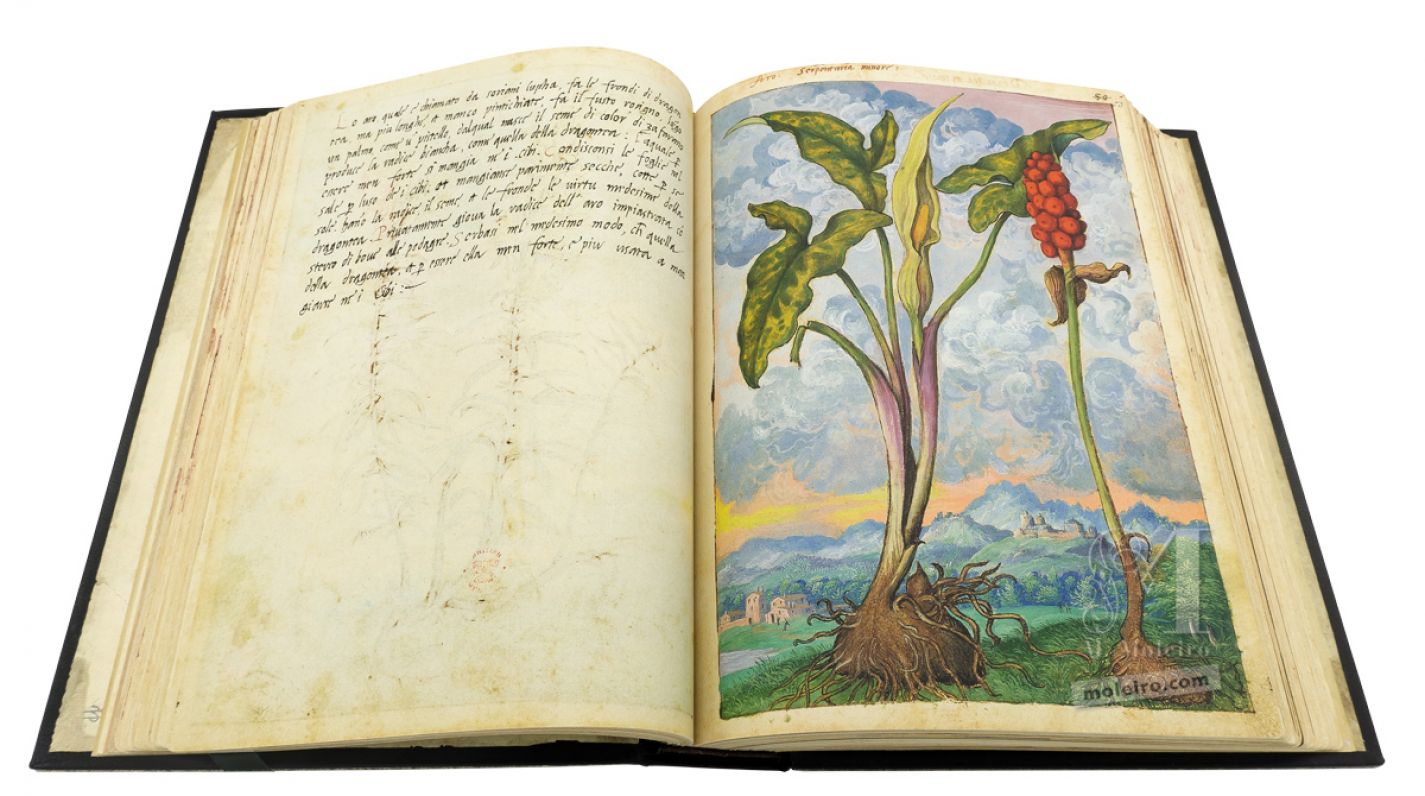Lords-and-ladies, called the lupha by the Syrians, has leaves like those of the dragon arum, but longer and less speckled, and has a reddish stem a palm long, like a pestle, from which the seed, which has the colour of saffron, grows. It has a white root like the dragon arum, but with a less strong flavour, and so it is used in cooking, as are its leaves, seasoned with salt. The dry leaves are also eaten, cooked by themselves. Its root, its seeds and its leaves have the same properties as those of the dragon arum. The root, applied as a poultice together with oxen dung, is particularly good for gout. The root is preserved like that of dragon arum and, since it has a less strong taste, is more often used in cooking. (f. 52v)
This plant grows in cool places, often transformed by humans, and riparian forests in Italy, France, Spain, Great Britain, the Mediterranean region and western Asia. Its green parts contain an alkaloid, a glycoside and saponins. In herbal folk medicine it was used as a healing agent, to heal burns, as a purgative, and a remedy for colds. The grated plant is applied to soften calluses on the feet. In ancient times the starch obtained from its rhizomatous tuber was used to stiffen clothing.
Ramón Morales Valverde
Real Jardín Botánico de Madrid
(Extract from the commentary volume of Mattioli's Dioscorides illustrated by Cibo)
